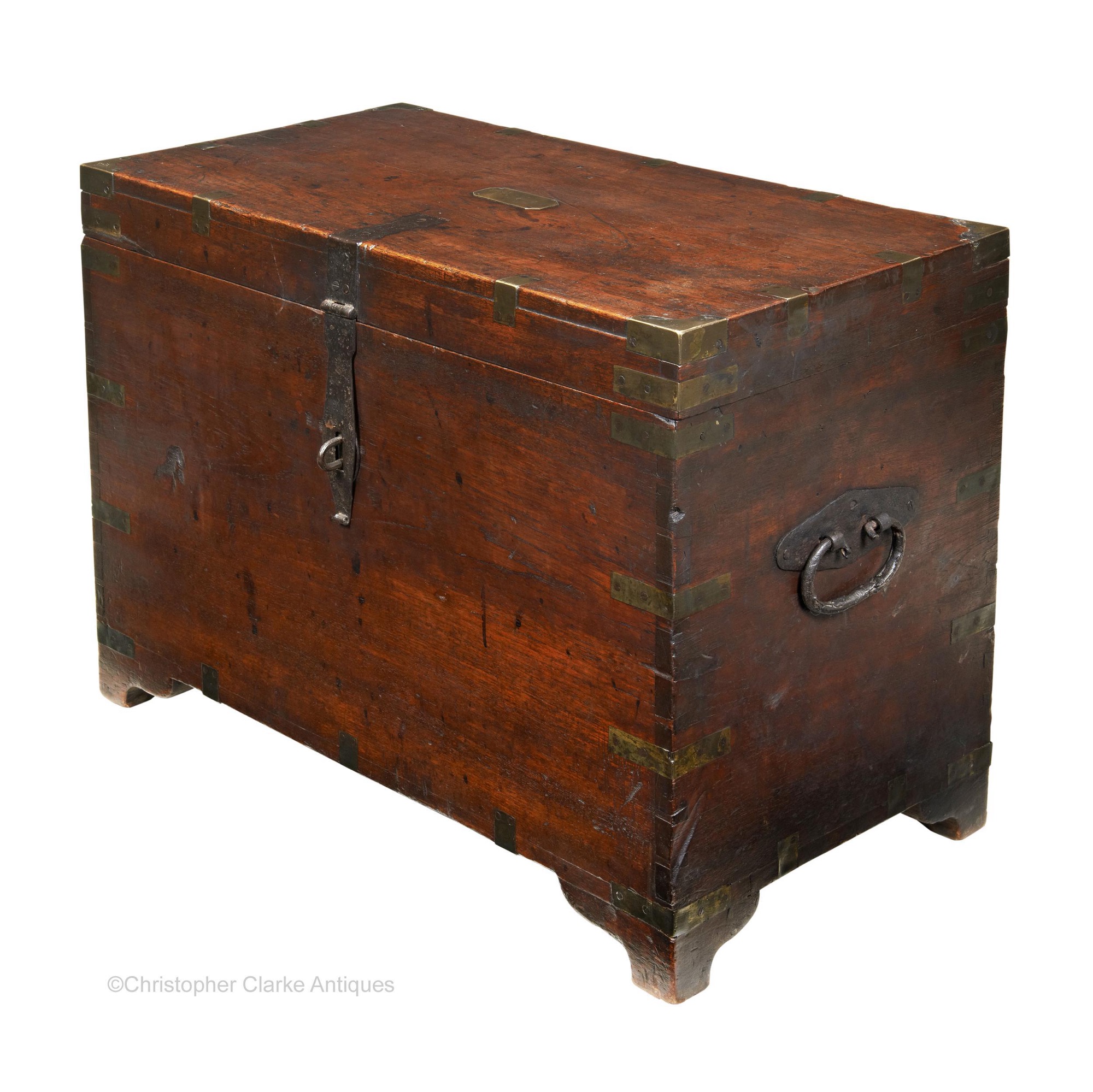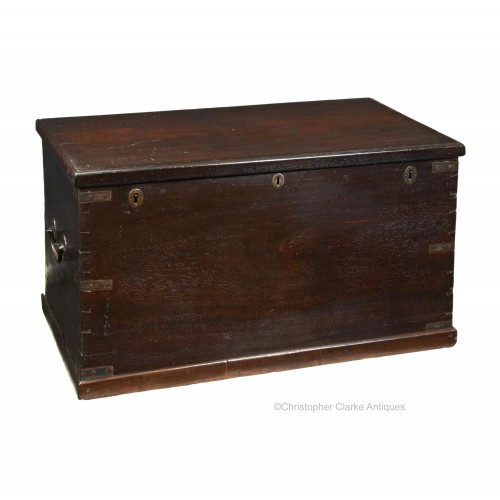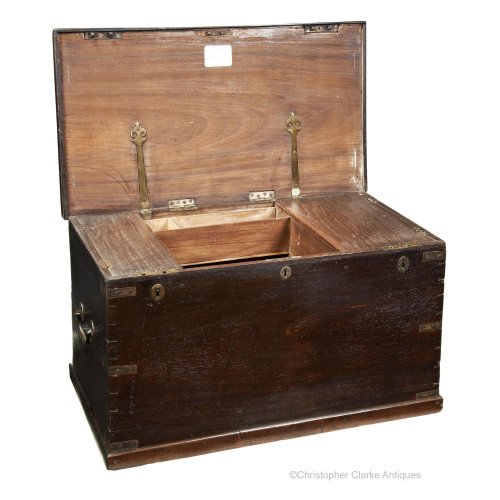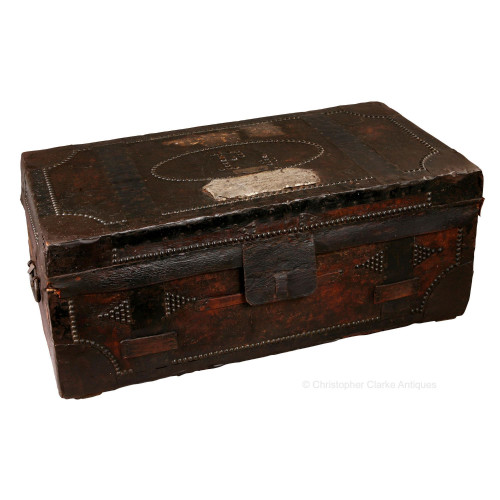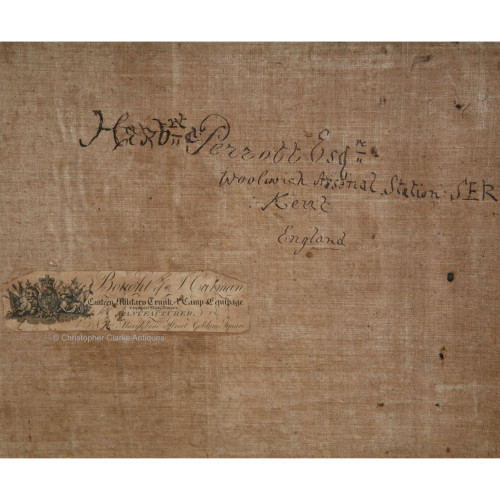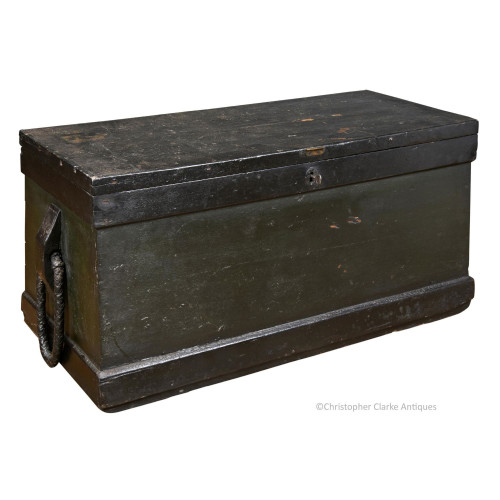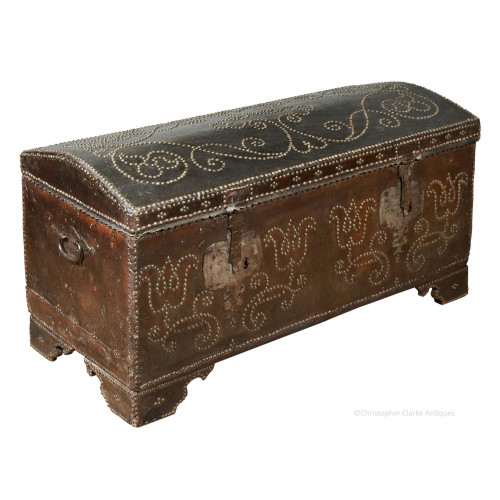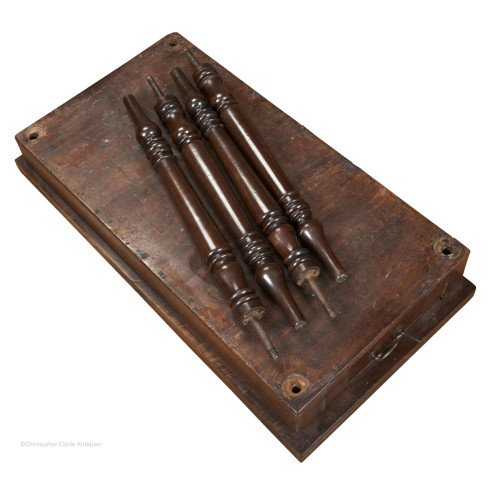Lt Colonel Gummer's Campaign Trunk
Lt Colonel Gummer's Campaign Trunk
82827
A teak Anglo-Indian Trunk that belonged to Lieutenant Colonel Gummer of the Madras Nativity Infantry.
Trunks like this were made for British Army Officers throughout most of the 19th century and so can be difficult to date. This example has a few features that point to its earlier date, which is confirmed by its provenance. Most such trunks have a simple square section style foot which is the continuation of the wood running the height of the corner. This trunk has dovetailed boards and a bracket foot. The iron work handles are also a little earlier. The top is rebated to the base to give a good fit. The chest has three hinges for the lid which shows that the maker wanted to add strength.
The trunk has good brass strap work and both a lock and an iron hasp to take a padlock for a second layer of security. The interior is plain, and the lid has a cord to either side to hold it open. The top of the trunk has an engraved brass plate stating, 'Lt. Col.l Gummer No. 5'.
Stephen Stone Gummer was born in May 1779. He was accepted by the HEIC as a Cadet in 1800 and rose to Lieutenant a year later in the 9th Madras Native Infantry. From 1803 to 1804 he took part in the Mahratta Campaign with Col. Harcourt's force. He was present at the taking of Cuttack Province in 1803 and Khoordah where he took part in the storming of the Barrier on the 30th November 1804. He was promoted to Captain in 1808 and joined the 25th MNI. Eight years later he married Caroline Briethaupht, whilst stationed at Cuddalore. After only 5 years of marriage, Gummer was widowed with Caroline dying in 1821. They had two young sons, Charles and Stephen, and it is likely that they were raised by relatives in England. In 1824 he was promoted to Major in the 45th MNI and on the 28th of July 1826 became a Lieutenant Colonel, stationed at Bellary. He became a Brevet Colonel on the 18th of June 1831. In 1834, whilst back in England he married Elizabeth Woodfall in Chelsea. They had a daughter Elizabeth and son Charles named after his first son who had died four years earlier. In January 1839, Gummer was allowed to resign his command of Jaulnak and allowed to return to Europe on sick leave. He travelled on the East Indiaman Walmer Castle from Bombay and it maybe this trunk formed part of his cabin furniture, if not stored in the hold. He died ten months later at Bridport St. Mary, Dorset in November. Given the length of travel from India to England at this time, he may have only had four or five months in England.
Stephen Stone Gummer spent his whole East India Company army career in Madras, albeit in a few different regiments. His only major campaigns were early in his career when the British were still subjugating parts of India. The main home of his different regiments was always Fort St. George although he was stationed in several different towns. His service record states that 'He can understand Hindoostanee and can speak it with fluency' it also noted that he was 'acquainted with the principles of surveying'.
This trunk is numbered 5 to help him or a servant quickly identify the contents. Trunks of this size are very practical for modern use due to their height. The same would have been the case for Lt. Colonel Gummer. Aside from storage, it could be used as a surface next to a chair and a seat. This example has a good colour and stands out for its relatively early provenance. Gummer's promotions date it to between 1826 and 1831.
Dimensions:
Georgian
Circa 1831
Brass Bound Teak
India
Lt. Col. Gummer
Stephen Stone Gummer
One Carrying Handle Replaced
RELATED ITEMS

